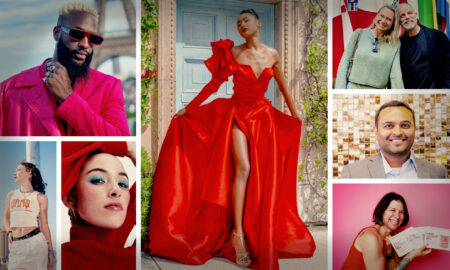
Today we’d like to introduce you to Jingyao Huang.
Hi Jingyao, we’re thrilled to have a chance to learn your story today. So, before we get into specifics, maybe you can briefly walk us through how you got to where you are today?
For me, photography is a means of communication. When I was a kid, I was very quiet and struggled with expression; it was challenging to communicate with my family. Recognizing my interest in photography, my father gave me one of his cameras to start capturing moments of life. Since then, photography has become vital for me to communicate with the outside world. It doesn’t demand extensive language to describe what I see and experience; I can capture it, show it to others, and show my thoughts visually. So, when choosing a college major, I decided to delve further into the theory and practice of photography.
After coming to New York, the works of artists like Robert Rauschenberg, Sarah Sze, Moholy Nagy, and Gerhard Richter, among others, sparked my interest in the deconstruction and reconstruction of photography and the transformation of impressions of familiar objects. Gradually, I started creating through installations and collages, reassembling fragments of photographic moments.
The first time I integrated photography and installations was in 2019. At that time, video installations dominated the art scene, and my commitment to photographic installations was met with uncertainty. Until I saw Sarah Sze’s exhibition, I felt inspired and courageous. Her work vividly demonstrated how photography could seamlessly blend with life, giving me the courage to persist in photographic installation art. Since then, I have intended to present the three-dimensionality of the envisioned photos in my artworks.
Would you say it’s been a smooth road, and if not what are some of the biggest challenges you’ve faced along the way?
I think the journey of artistic creation is a challenging path. After graduating with a bachelor’s degree in photography in 2019, I began to question whether photography was my creative expression. Over a year of working experience, especially in the art field, and the unique circumstances during the pandemic led me to a rediscovery of photography. I started capturing daily moments, specifically sunrise and sunset, from the rooftop of my home. During this period, the memory card of my camera, used for almost a decade, showed signs of aging, resulting in a data mess. Every restart would randomly generate and display new chaotic images. I think this resembles a form of communication through photography. The chaotic data mess in this series inspired me to explore interdisciplinary learning, prompting my decision to enroll in the MFA Fine Arts program. Throughout my graduate studies, I learned how to integrate photography with various other media, culminating in the completion of the ‘Chaotic Data Fences, Baraka, and the Cityscape series. My inspiration originates from my inner consciousness, and the exploration of these ideas through diverse media has been a driving force behind my continuous creative endeavors.
Thanks for sharing that. So, maybe next you can tell us a bit more about your work?
I am a multidisciplinary Artist. My work challenges the conventions of photography and explores new possibilities by dismantling and reassembling photographs through collages, sculptures, installations, and site-specific projects. Inspired by the history of photography, I aim to transform the medium in today’s society and redefine personal identity and perspectives on surroundings.
Using the vocabulary of photography, I explore spatial relationships between images and materials, light and shadow, and the evolution of figurative photography into abstract geometric ideas. My recent works translate images of modern cities into new abstract geometric installations and sculptures, signifying the memory of time and responding to personal experience.
Engaging with traditional photography in new ways, I invite viewers to participate in novel approaches to understanding images from 2D to 3D. Through installations, I transmute memory fragments into physical forms, documenting daily life through materials.
Plastic is one material of particular interest to me, with its translucency resembling a camera lens. Its changing status over the years has led me to consider things from different perspectives. By using plastic in my work, I challenge the boundaries of photography and extend the medium’s language into new territories.
My practice is to break the spatial constraints of photographic images and create a dynamic interaction with viewers by presenting images as 3D sculptural forms.
What’s next?
I’m currently based in New York, working on my work in a studio in Brooklyn. I hope to continue creating every day in the studio, building many installations, even if the studio gets too full.
Contact Info:
- Website: www.jingyaohuang.com
- Instagram: jingyao_huang






 Image Credits
Image Credits
Jingyao Huang














